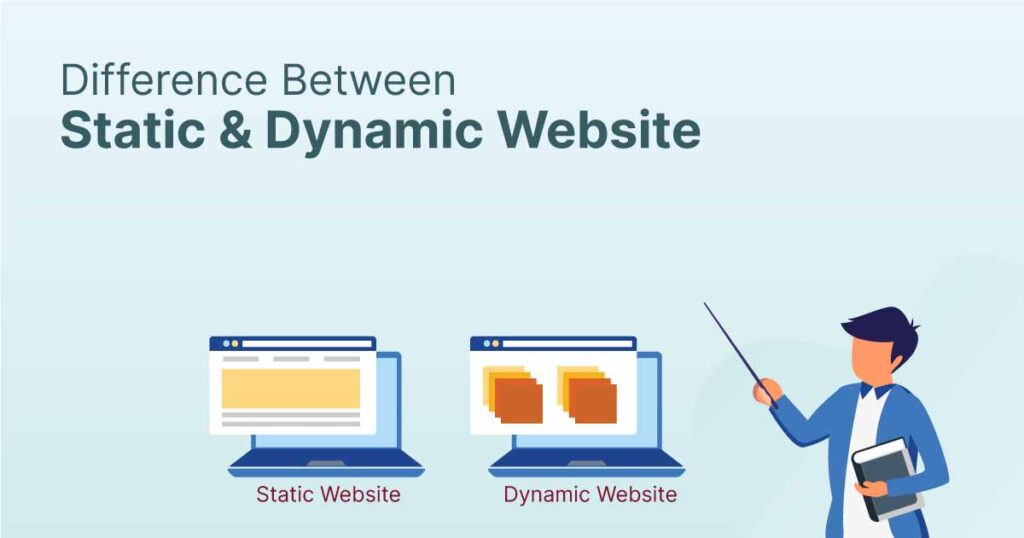
A Comprehensive Comparison of Static and Dynamic Websites
In today’s digital age, having an online presence is crucial for businesses of all sizes. One of the key decisions in building a website is choosing between static and dynamic website designs. Each type offers unique benefits and caters to different needs. This comprehensive comparison aims to highlight the distinctions, advantages, and potential drawbacks of static and dynamic websites, especially in the context of professional web design services.
Understanding Static Websites
Static websites are the simplest form of websites, consisting of fixed content delivered to the user exactly as stored. These websites are typically built using HTML and CSS, and every visitor sees the same content. Here are some key characteristics of static websites:
- Cost-Effective: Static website designing services are often more affordable since they require less time and effort to develop. For small businesses or personal projects, this can be a significant advantage.
- Speed and Performance: Since static websites do not require database queries, they load faster, which enhances user experience and can improve SEO rankings.
- Security: With no server-side processing, static websites are less vulnerable to security breaches, making them a safer option for businesses that prioritize data security.
- Maintenance: These websites are easier to maintain because they do not require complex updates or server-side scripting. Any changes can be made directly in the HTML files.
However, static websites have their limitations. They are not suitable for sites that require frequent updates or user interaction. For businesses needing a more dynamic online presence, a static website may not be sufficient.
Understanding Dynamic Websites
Dynamic websites offer a more interactive and engaging user experience. They utilize server-side technologies such as PHP, ASP.NET, or Node.js, and databases like MySQL or MongoDB to generate content dynamically. Here are the main features of dynamic websites:
- Interactivity: Dynamic website designing services provide the ability to create interactive features such as forms, user logins, and personalized content. This interactivity is crucial for e-commerce sites, social networks, and blogs.
- Content Management: These websites often include a Content Management System (CMS) like WordPress or Drupal, allowing site owners to update content without needing technical expertise. This feature is beneficial for businesses that need to update their content regularly.
- Scalability: Dynamic websites can handle a larger volume of content and user interactions, making them suitable for growing businesses. They can be easily scaled to accommodate new features and increased traffic.
- Customization: Professional web design services can leverage dynamic websites to offer highly customized experiences tailored to individual users. This customization can enhance user engagement and loyalty.
Despite these advantages, dynamic websites come with their own set of challenges. They are generally more expensive to develop and maintain due to their complexity. Additionally, they require robust security measures to protect against potential vulnerabilities in the server-side code and databases.
Choosing Between Static and Dynamic Websites
When deciding between static and dynamic websites, it is essential to consider your specific needs and objectives. Here are some factors to help guide your decision:
- Purpose and Content: If your website is primarily informational and does not require frequent updates, static website designing services might be the best fit. For example, a portfolio site or a basic company information page can benefit from the simplicity and speed of a static website.
- Budget: For businesses with limited budgets, static websites offer a cost-effective solution. Dynamic websites, while more expensive, provide greater functionality and flexibility, which might justify the investment for businesses expecting to scale or needing advanced features.
- User Experience: If your website requires user interaction, such as customer logins, e-commerce functionality, or personalized content, dynamic website designing services are necessary. These services enable you to create a more engaging and interactive user experience.
- Technical Expertise: Static websites are easier to build and maintain, even for those with limited technical knowledge. On the other hand, dynamic websites require a higher level of expertise in server-side programming and database management. Professional web design services can bridge this gap, ensuring that your website is built and maintained effectively.
The Role of Professional Web Design Services
Whether you opt for a static or dynamic website, leveraging professional web design services is crucial. These services bring a wealth of experience and expertise to the table, ensuring that your website not only looks great but also functions smoothly. Professional designers can help you choose the right type of website based on your business needs, ensuring that you get the best value for your investment.
In conclusion, the choice between static and dynamic websites depends on various factors, including your website’s purpose, budget, desired user experience, and technical requirements. By understanding the differences and consulting with professional web design services, you can make an informed decision that aligns with your business goals and provides a robust online presence.
